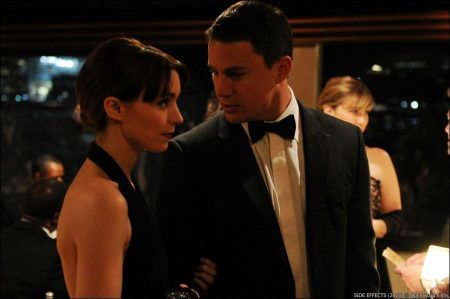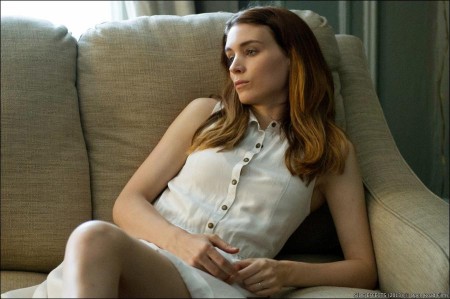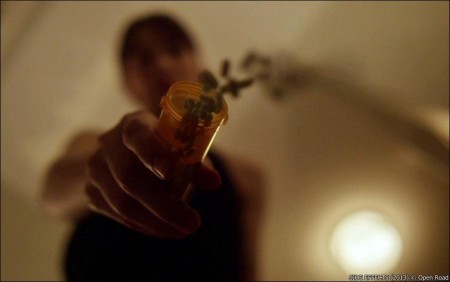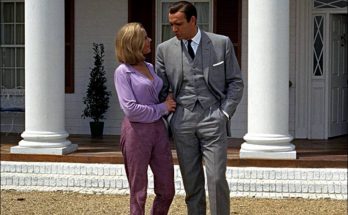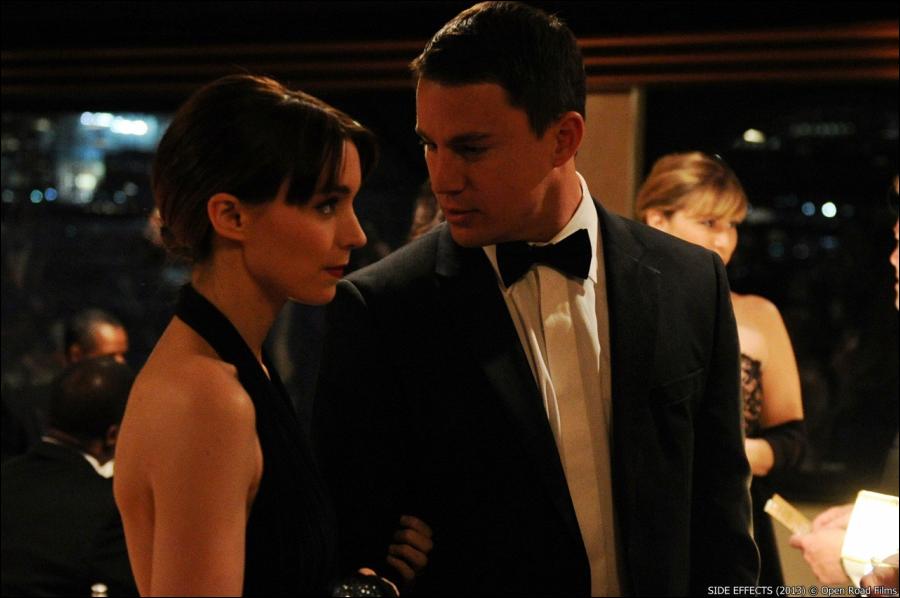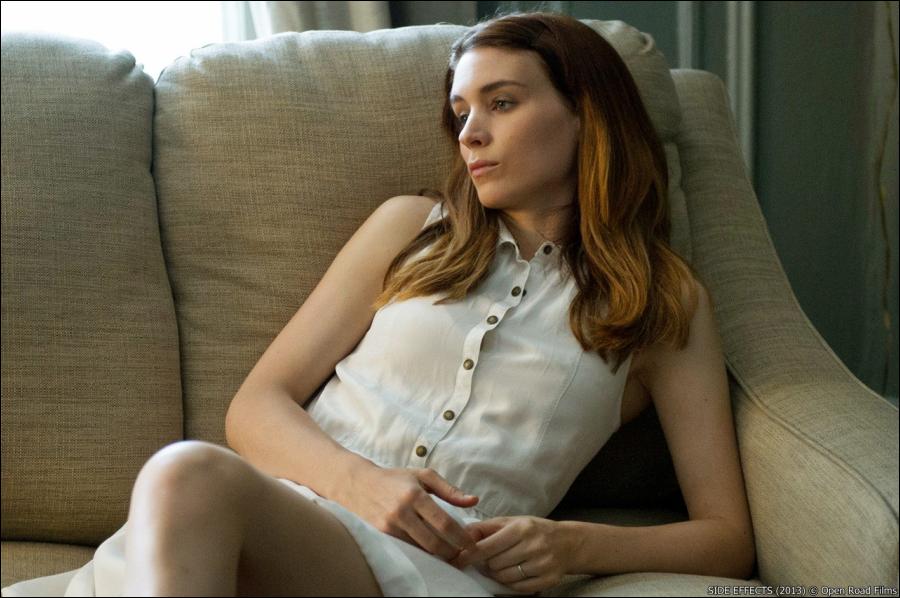Side Effects is a provocative thriller about Emily and Martin (Rooney Mara and Channing Tatum), a successful New York couple whose world unravels when a new drug prescribed by Emily’s psychiatrist (Jude Law) – intended to treat anxiety – has unexpected side effects.
Side Effects was shot primarily on location in and around New York City, which Soderbergh says can be a bit intimidating. “A lot of great movies have been shot in New York,” the director explains. “It is very daunting to consider what has come before, whether it’s Sidney Lumet or Martin Scorsese or Alan Pakula. There are so many iconic New York movies.
I decided that the important thing was to make the locations organic to this movie. There are no montages. I’m not showing you some aspect of New York you’ve never seen before, just because I can. The narrative is the priority. That doesn’t mean we didn’t look for locations that were interesting and different, but I don’t go anywhere one of the characters hasn’t been.”
Fortunately, the characters go to some impressive New York landmarks including the legendary restaurant Le Cirque, the Waldorf-Astoria and Intercontinental Hotels, the conservatory pond in Central Park, the Frank E. Campbell Funeral Home on the Upper East Side and the exclusive residential enclave of Centre Island.
But the film also travels to grittier locales, including the Taconic Correctional Facility in Bedford Hills, New York, the Queens House of Detention, Bellevue Hospital in Manhattan and the Manhattan Psychiatric Center on Wards Island in New York City’s East River, which functions as both a prison and a hospital for the mentally ill accused of crimes.
“On all his movies, Steven has tried to be as realistic as possible,” says producer Gregory Jacobs. “He likes to shoot in the real places whenever he can.” “I always prefer to shoot in practical locations if I can, especially in New York,” agrees Soderbergh. “It provides a level of realism we can’t match on a soundstage.”
The director depended on production designer Howard Cummings, a five-time veteran of Soderbergh productions, to help him find the unique and evocative locations used in Side Effects. “With Steven, I always hit the ground running,” says Cummings. “That’s the pace he works at. He likes it when the location helps tell the story. We make unusual, unexpected choices, but always grounded in reality.”
Much discussion was devoted to where Emily Taylor would live after her fall from grace. “We ended up on 157th Street in Morningside Heights,” Cummings says. “It’s the uppermost part of Manhattan. Steven fell in love with the neighborhood. He saw it as a no-man’s land that she was stuck in way uptown. It keyed into the idea that she’s hiding out. There’s a scandal. Her husband was in the papers and all their friends have shunned her. She is trying to reinvent herself.”
To most Manhattanites, the apartment might seem spacious, but for Emily it is a huge step down in the world. “It’s not big, but it’s very New York,” says Cummings. “Her bedroom is actually a converted dining room with French doors. You have to go through the kitchen to get to the bathroom. I knew Steven would like it. A confined space energizes him. He’ll pick angles that he wouldn’t normally pick because of the confines.”
To bring home everything Emily has lost, Soderbergh includes a flashback of her and Martin’s recent past. “Steven wanted to see them rich and happy,” says Cummings. “A tiny cramped apartment is the opposite of giant outdoor lawn party, which is how we show their former life. It’s on the grounds of their picture perfect Martha Stewart Connecticut mansion.”
Soderbergh set the sequence apart from the rest of the film by using a handheld camera to shoot and infusing it with fresh bright colors that are missing from the rest of movie. “The brief flashbacks are sun-kissed, summery and optimistic,” he says. “It’s the only place in the movie you will see red, yellow, orange, or any vibrant colors. The rest of the time we’re in a blue-grey palette that is so typical of New York when winter is starting to turn to spring.”
Also in sharp contrast to Emily’s flat is Dr. Banks’ new condo, which reflects his recent personal and professional ascension. “Everything had to be brand spanking new,” says Cummings. “The appliances have never been touched. It’s black and white and very modern with a few antiques thrown in to warm it up a bit.”
At Manhattan Psychiatric Center, the filmmakers shot in an unused ward in the still operational state facility. “We used a huge dormitory, which wasn’t originally scripted, but it was suitably horrific,” says Cummings. “It is essentially a prison—a prison where people are getting medication and care, but it’s still a prison. Everything is that institutional green that has an innate depressing quality.”
Security on the hospital set was tight. “To walk in the hospital, we had to go through two locked doors for security,” says Zeta-Jones. “There are some patients in this particular facility who are locked down because of the extremity of their cases. It was the real thing, which brought great authenticity to the experience.”
The production was also granted rare access to a courtroom at 100 Center Street, where murder trials are actually held in New York. “Nobody gets to do that,” says Cummings. “But Steven shoots with minimal lighting and a smaller crew, so we are more nimble than most. He was able to do what would take anyone else a week all in one day. The setting gives real credence to the story.”
That efficiency is one of the hallmarks of Soderbergh’s working style. As is his usual practice, he served as his own director of photography and editor on Side Effects.
“As his own cinematographer, he found a visual language for this movie that is exactly the right kind of creepy,” says Burn. “We were able to make this on a relatively small budget, because he is so adept at so many things.”
Every evening, Soderbergh edited the footage he shot during the day. “We saw things daily that I normally wouldn’t see till four or five weeks after we finish shooting,” says di Bonaventura. “It’s a big advantage, because he can quickly ascertain if the choices are working in the way he wants them to work. He can calibrate the performances almost instantly. He knows what the scope of the story will be and how effectively the tension is building. It’s such an efficient process.”
Cummings and Soderbergh worked with costume designer Susan Lyall to build a realistic wardrobe for a working girl in Manhattan. “We thought Emily would wear a lot of black, which is very New York,” says the production designer. “She works for an ad agency, so it made total sense for her, but we also consciously decided to narrow the world for her in terms of color.”
Lyall put together a realistic wardrobe for Emily, often repeating clothes as the character would have to in real life. “She has a job and a career,” says Lyall. “But she doesn’t have the grand element that she used to have. We put together a closet like a person does, with a few things left over from the past, but nothing too grand. Also, Rooney is petite in stature, so too much of anything overwhelms her quite quickly. It was very important to just keep her in clean and simple lines.”
Jude Law’s character gave the costume designer more leeway to have fun. “We dressed Jude in beautiful clothes because Sasha Bardey dresses in beautiful clothes,” she says. “He is successful; he is in the press; he is an expert witness. All of these things inform the way he looks. But we didn’t want him to look too corporate so I added small touches like the colors of his shirts, or a vest that give him a soothing quality.”
Zeta-Jones and Tatum are attired in equally upscale threads. “Catherine’s character is part of well-heeled East Coast enclave, as well as an authority on various medical trends, and she dresses accordingly,” says Lyall. “Channing’s character is grounded in the world of the suit. Wall Street men do dress the part, so even his most casual look is pretty dressed up.”
Di Bonaventura says Side Effects was one of the easiest films he’s ever produced. “The entire team worked in such cohesion and that came directly from Steven,” he says. “He approaches every script with a great understanding of what he wants to achieve and that gives clarity to everybody about the kind of movie we’re making. We started and finished on a really strong footing.”
Side Effects
Directed by: Steven Soderbergh
Starring: Channing Tatum, Rooney Mara, Jude Law, Catherine Zeta-Jones, Mamie Gummer
Screenplay by: Scott Z. Burns
Production Design by: Howard Cummings
Cinematography by: Steven Soderbergh
Film Editing by: Steven Soderbergh
Costume Design by: Susan Lyall
Set Decoration by: Rena DeAngelo
Music by: Thomas Newman
MPAA Rating: R for sexuality, nudity, violence and language.
Studio: Open Road Films
Release Date: February 8, 2013
Related Link: View the Full Production Notes for Side Effects
Views: 147
